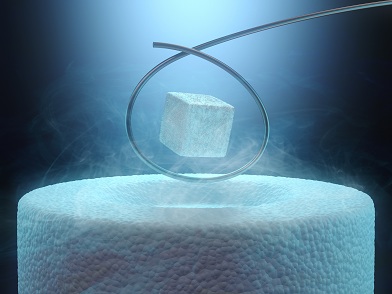Printable cables could spell green energy boost

Related topics
Innovation Advanced materials Austria Belgium France Germany Italy Romania Slovak Republic Spain United Kingdom Nanotechnologies, advanced materials, advanced manufacturing & processing, and biotechnologydate: 16/12/2014
Project: European development of Superconducting ...
acronym: EUROTAPES
See also: CORDIS
Contact: Contact
Superconductors are materials that can efficiently conduct electricity with very low power losses compared to traditional copper or aluminium cables. They also make very powerful magnets, as used in healthcare for magnetic resonance imaging (MRI) scanners.
However, commercially available superconductors need extremely low temperatures to work efficiently – below minus 250°C – which are expensive to maintain. New superconductors work at higher temperatures, but they are brittle and thus difficult to form into wires and cables, which limits their use by industry.
The EU-funded project EUROTAPES has developed a method for making superconducting tapes without these limitations. The method uses a technique adapted from ink-jet printing to make insulated tapes and wires containing superconductors that work at higher temperatures – a still chilly but more usable minus 180°C – in lengths suitable for commercial use.
The project has developed two new techniques to achieve this. The first is a chemical deposition process to produce the tapes, which the project has patented. The second is a way to use nanocomposites – mixtures of materials in the range of 1 to a hundred nanometres (1 nanometre is a billionth of a metre) – as the “ink” for “printing” the superconducting tapes.
Project coordinator Xavier Obradors of Barcelona’s Institute of Materials Science in Spain, says: “It is a real breakthrough to produce superconductors with this technique as their manufacturing costs will be much lower than with existing methods.”
Energy and industry
Obradors explains that demand for superconducting tapes is very strong. The project also supports renewable energy, he says, because cables made with these tapes lose no electricity when they are transporting it, and superconductor-tape devices in smart grids help balance out the intermittent power supplies typical of wind- and solar-generated power.
Superconducting wire could also make wind turbines twice as productive as they are now, says Obradors. This is because wind turbines currently turn wind energy into electricity using copper coils, which have limits to how much power they can generate, unlike superconducting wire coils, he adds.
Opening up a further possible power source, he says, superconducting tapes could also provide high-field magnets for nuclear fusion.
The medical sector could also benefit from the project’s work. For example, magnetic resonance imaging scanners use strong magnetic fields and radio waves as an alternative to X-ray scanners.
This piece of equipment would not need costly coolants if the project’s high-temperature superconductors were used, while the stronger magnetic fields they generate would lead to higher image resolutions.
Obradors adds that the printing process itself has potential for other applications. It can make nanocoatings for textiles and electronics and for protection from harsh environments, potentially leading to innovative products.
New method, new materials
EUROTAPES’ method transforms inks into superconductor materials making them easier to process. It suspends tiny particles of different oxide metals in chemicals, then “prints” the inks on top of each other, producing tapes including superconductors layered with other materials.
A key part of the technique involves controlling the structure of the tiny nanoparticles of oxide and the stability of the “ink” created with them. It is also important to find the right combination of superconducting and non-superconducting materials for the properties the tapes need, adds Obradors.
He explains that mixing the materials makes the tapes thicker, allowing them to transport more electrical current and increasing the strength of the magnetic fields they generate.
Additional metallic and insulating materials make up the last layers on the tapes, to protect the superconductors and increase the amount of energy they conduct. For the best effect, it is better to combine different coatings, which is easier with the ink jet printing technique, says Obradors.
Printing out tapes in long lengths is a first for this method, but gives a low-cost manufacturing process that results in high-performance materials, he says: “We are competing with existing technology in the developed world for conductivity. We have to demonstrate that we are doing something new and with added value.”
During the rest of the project, which ends in February 2017, the team is investigating industrial applications of the materials and techniques.
They plan to simplify manufacturing methods, find the best conductor for each application and build visual systems for controlling production, says Obradors. By the end of the project they hope to make tapes that are 500 metres long to show industry that their concept has practical potential, he says.
